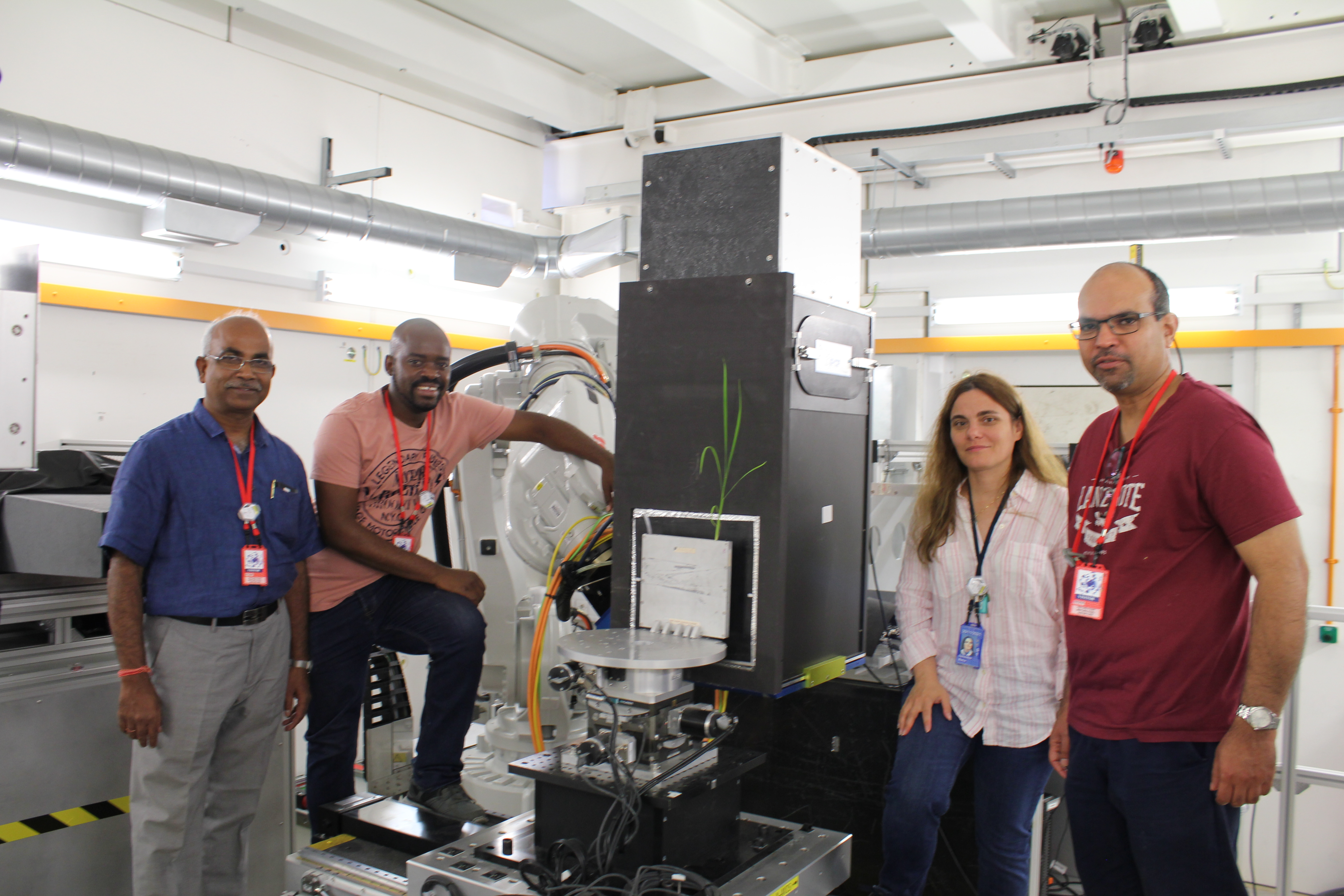Mapping wheat root system architecture
Two thirds of all human dietary energy come from maize, wheat and rice, and so their growth is crucial to the world's food security. An important factor in crop growth is what goes on underground: the interactions between the plant roots and the soil around them.
Understanding what goes on underground without disturbing the plant is difficult, but has been made easier by the appearance of techniques that can image the soil non-invasively. These include X-ray Computed Tomography (X-ray CT) and Magnetic Resonance Imagery (MRI). Because of the high neutron sensitivity to the hydrogen present in water in the soil and the roots, Neutron Computed Tomography (NCT) is an extremely valuable technique.
NCT enables researchers to visualise roots and water distribution in three dimensions, and can be carried out on the IMAT beamline here at ISIS. Previous research on the beamline has given important insights into the water uptake of lupin seedlings. To expand the applications of this technology beyond lupins, a group from the University of Sheffield, supported by the STFC Food Network+, have been the first to study wheat root growth using NCT. The group also used a soil composition similar to that found in the external environment, rather than a uniform material such as sand.
Seedlings were grown in aluminium tubes to enable imaging and then transported to the beamline for investigation. Before measurement, the plants must undergo their equivalent of “nil by mouth" – with no watering for four days. This is to reduce the water content of the soil, to stop water from the soil acting blocking the scientists' view of the water in the roots.
Lead researcher, Dr Manoj Menon, and his group were able to map the root structure of the wheat seedlings in sandy loam soil. They found that sideways root growth increases in regions where the soil was finer. The group were also able to map the water distribution of the sample, finding that large aggregates within the soil held water much more than smaller pieces of soil. These findings are crucial when considering how dry spells in the weather affect plant growth, and what can be done to the soil to mitigate these effects.
Reducing the impact of transportation
All plant-soil system experiments carried out at ISIS in the past have involved bringing samples to the site in order to conduct imaging experiments on them, and the additional time needed for this can cause the plants to be damaged, or grow too much making difficult to correlate different measurements techniques used (e.g. neutrons vs X-ray imaging). IMAT beamline scientist Genoveva Burca has initiated and developed a project to install the first research greenhouse at a neutron facility to support the increased number of life science experiments on IMAT and meet the challenging demands of an interdisciplinary approach.
The newly built research greenhouse facility will make the preparation of plant samples on site much easier for any future users whose projects involve the imaging of plants, as they can come and use the facility to prepare their samples in the same way chemistry users come and use the laboratories ahead of their experiments.
Dr Manoj Menon and his collaborators, including PhD student Tinashe Mawodza, were the first group of users to put the new research greenhouse into action. Building on their research into wheat plant growth, they were using neutron imaging to investigate the effect of water deprivation on root growth of rice. The rice plants have been prepared in the greenhouse and exposed to natural daylight right up until the point when they go into the instrument. This exposure to daylight is important as it what encourages the plants to take up water in their roots.
As this is such a unique facility, the aim is for the greenhouse to be available to users of all the facilities at the Rutherford Appleton Laboratory. Using neutrons and X-rays to measure plant samples gives complementary data, which are extremely valuable. Where X-ray tomography can struggle to provide contrast, neutron imaging is especially good at detecting different isotopes of hydrogen. Neutrons attenuate differently to each isotope, shedding light on even subtle features of a sample. Experiments can be tailored by, for example, using deuterium to highlight different parts of a sample uncovering structures previously unseen with other techniques, and this is continuously improving with the advancements to sources and detectors.
Having ISIS and the Diamond Light Source on the same site provides users with the convenient opportunity to measure the same plant on both facilities, and the research greenhouse will make this kind of joint experiment easier.

From left to right: Professor Bhabani Das (Indian Institute of Technology Kharagpur), Tinashe Mawodza (Sheffield University), Dr Genoveva Burca (ISIS), Dr Manoj Menon (Sheffield University) on IMAT.
Further Information
More information on wheat research done on IMAT using neutron imaging can be found in T. Mawodza et al. (2020), Geoderma, vol 359, https://doi.org/10.1016/j.geoderma.2019.113988
More examples of bioscience research on IMAT.
Other science highlights from IMAT.
